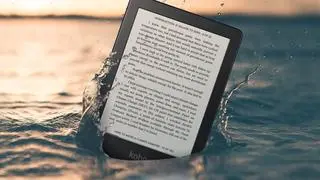Chargers for mobile phones and other devices come in different shapes and sizes. But all you really need of a charger is to have it handy exactly when you need it. And running around to find a plug-point for the ‘travel charger’ could be a pain, especially if you are on a trekking trip or an over-crowded airport waiting to catch your next flight.
There are chargers that fill in this gap. Some use AA or AAA batteries to charge a mobile phone, some have in-built rechargeable batteries. The drawback with these chargers is that they are of no use once the charge of the batteries runs out.
Here’s where solar chargers come handy. These chargers use natural energy from sunlight to recharge themselves. So, even if the charge runs out when you are, for example, trekking, the sunlight is enough to charge the device.
The latest solar charger from Solmate - Flare - goes beyond than being just a charger. The palm-sized device doubles up as a flash light and a lantern as well.
Design and feel
The Flare, although bulky at the first glance, is convenient to carry (the package also comes with a nice cloth pouch). The device can be charged through solar energy but unlike ordinary solar chargers, this one comes with secondary charging options too. It can be charged through a computer’s USB port or directly from an electric outlet.
One side of the device has the solar panel, while the other, the lantern. The flash light is on the top. Adjacent to it are the switch on one side and a full-sized USB port on the other. A mini-USB port is at the bottom next to a belt-clip. Solmate has thoughtfully included a clip in the device itself, so that you can clip it on to your belt loop or bag. This way, the charger gets charged as you move.
Using the device
The charger takes approximately three hours to get charged fully from a power source. The time taken is slightly higher when charging from an USB port. The time taken to charge using solar power depends on the strength of the sunlight at a particular place. It could take even twelve hours if the atmospheric conditions are not suitable, say on a cloudy day.
The Flare comes with a full-sized USB port. This helps you to use the USB cable that comes with your mobile phone to connect the charger, obviating the need for separate adapter tips. For other phones and for phones that don’t charge via USB ports, the sales pack includes a set of commonly used adapter tips.
For operations such as the lantern and flash light, there is only one button that can handle them all. This activates the flash light, SOS light (blinking flash light), lantern and lantern with 50 per cent dim. This is quite irritating as there is no way to switch on the lantern directly. You have to go through the cycle of flash light, SOS and then the lantern. The silver lining is that it is only two clicks away. Separate switches would have made it a little more convenient to use.
The charging light turns green when the device is 70 per cent charged (at the end of the quick charge phase), which could be misleading. An indicator light at the end of the quick charge and the green light at the end of the full charge would make things easier.
Solmate’s first solar charger was also a pen drive, which meant that there was an ‘incentive’ to keep it plugged in the computer. There is no in-built memory in the Flare, but it makes up for this with the option of charging through a power source. The power source option also makes it easier - you don’t have to go around looking for a computer USB port if there is no sunlight.
The Flare costs Rs 1,295 and can be bought directly from Solmate’s web site www.getsolmate.com .






Comments
Comments have to be in English, and in full sentences. They cannot be abusive or personal. Please abide by our community guidelines for posting your comments.
We have migrated to a new commenting platform. If you are already a registered user of TheHindu Businessline and logged in, you may continue to engage with our articles. If you do not have an account please register and login to post comments. Users can access their older comments by logging into their accounts on Vuukle.